#also. the amount of recontextualizing the comics do
Explore tagged Tumblr posts
Text




knowing
#alien stage#alnst#saw an edit where they put these shots of ivan and sua back to back#and i've never been the same since#in both... looks like tears but it's not#also. the amount of recontextualizing the comics do#sua's smile there is definitely a knowing one...#wonder if people picked up on that before the comic though?#i certainly. didn't
64 notes
·
View notes
Text
Trying to write my thoughts as blurbs because I have many (also spoilers)
TOTK doesn’t just have 5 temples designed like divine beasts and traditional dungeons, it has at least 7 that i’ve encountered, actually.
TOTK pulls the wool over people’s eyes on dungeon content in general. Theres not just “more than 5 dungeons”, theres more than one genre of dungeon in this game. Glyphs, Shrines, Temples, Castles, Mazes, Caves, Regions- its dungeon all the way down dudes. This is the most dungeon Zelda game has been since the original two games. It just doesn’t call everything a dungeon.
Cheesing these areas should feel exactly how it makes you feel about it. You asked the game if you could skip, then it gave you permission to skip it. Getting mad about this is understandable but also….There’s plenty of sign posts telling you how to have the most full, enriching experience in an area. it just wants you to follow the signs and paths and tunnels and there’s a LOT of different ways to traverse these content hallways. If you don’t follow them, you won’t have that experience. Simple as that. If that makes you feel good, good. If it makes you feel mad, i get it. But realize that you said “can i skip it” and then saw this game is exactly as good at saying “yes” about that as it is about everything else!! if skipping things is rewarding to you, this is going to be a good experience. If skipping things isn’t rewarding for you, it’s going to be a bad experience.
Totk and botw are some of the best GMs in videogames and I don’t think enough people are thinking about it in those terms. These games want to meet you where you are at while meeting it where it is at. I cannot express the how incredible it is to have the amount of ways to play that these games offer up. The challenges it makes you do for yourself NATURALLY is INCREDIBLE. This game is constantly getting me to challenge myself, and when I get tired of that, is more than happy to give me a power fantasy in which I am an unstoppable spank bastard.
The common thought that there is a proper “play order” for the story is ABSOLUTELY BULLSHIT. This game does not spoil itself. All it does is recontextualize your perception of what’s happening and reiterate the same beats again and again. It’s also one of the most laughably, hammy and predictable stories I’ve ever engaged in ever. Let’s get serious here- if you didn’t catch the twists from almost at the jump, I’m sorry, but you have zero media literacy!!! The foreshadowing in this is comically overcasting every single line in every single conversation. If anything, this game wants you to come to a conclusion about it’s twist extremely early, and to deny it’s inevitability. It tells you everything in it’s opening five minutes. From there, You just getting details with new information being largely context. But also…It wants you to believe that it’s not the whole story. And guess what?? it’s not!! You don’t get the whole story until you experience the whole game, no matter the order you play it!
I have more specific thoughts and why link keeps his lips locked here if you get stuff early, but in general, I think the lad finds telling people Zelda is a Dragon and will never return is not an option in his mind. so like the courageous hopepunk dummy he is, rejects that as unwinnable and forever. thematically, this mirrors Rauru’s own morality of doing the right thing even in the face of infinite defeat. When it comes to Zelda, bucking against inevitability of fate is par for the course with our characters. These games are always about this. ALWAYS!!!
This game is actually uglier than breath of the wild. It’s got more image clarity, and more stuff happening, has a really cool art direction and beautiful colors, and its own unique flavors, but BOTW had less moving parts and was able to manage them much easier and cohesively. Totk is ugly on purpose and confidently so because the ugliness serves incredible purposes.
15 notes
·
View notes
Note
☕️ the Optimus Prime ongoing?
look, i get why a lot of the fandom, even the part of the fandom that likes exRiD, often bounces off the OP ongoing to one extent or another. it's a book with a lot of caveats required when recommending it; both in that it has some pretty significant flaws narratively, and that what it's even trying to do in a lot of cases is simply not what a lot of people want out of their TF comics. but i really really like the OP ongoing. at its best it has some of the most interesting and subversive approaches to iconic parts of TF, especially Optimus himself, that we've seen in any major continuity; it pulls together Barber's concept for IDW Optimus more completely than anything else, and as someone who really respects what he went for with that character personally, that alone means I get a lot out of it.
its big flaws are pretty easy to nail down, tbh. it exists during the mandated hasbroverse stuff that forces a lot of chaff into the world and ongoing narrative of IDW1, and it's forced to bear the brunt of it among the three ongoings. it comes at a point where Barber is being stretched REAL thin by his writing and editorial responsibilities, and there is a very real dip in how tight the storytelling is that i have always assumed was in part related to what must have been just an overwhelming amount of work Barber had to do each and every month on these comics by that point. (the devil works hard. Barber, when running TF comics, worked harder.) at times, Barber gets extraordinarily excessive regarding his tendency for extremely deep cut referential lore-heavy stuff, which if nothing else makes the fact OP was supposed to be a new-reader-friendly soft relaunch HILARIOUS. and content wise, there are some swings and misses in there for sure.
but still. i do like it. i think it does such a good job at making Optimus a central character, as distinct from necessarily a protagonist, and showing through all these other characters around him the weight he exerts on his narrative and his world. it's a story interested in the consequences of a character like Optimus being able to exist, someone who is mythic walking around still alive and interacting with those around him, and the near impossibility of leveraging anything like that for actual good because it will always bite you in the ass.
and it has so many compelling characters! arcee gets her due here, following on from exRiD. some of the best soundwave content in the comics is found here, and i love barber's soundwave. aileron, jazz (GUYS, JAZZ IS IN THIS ONE, WILL THAT MAKE U READ IT), a resolution for sideswipe... and yeah, the series understandably has a reputation for being Barber at his most overly convoluted and plot-heavy and fanwanky, but it also has some truly compelling emotional threads because dammit Barber IS good at writing emotional arcs, and he deserves to be known for it too. the issue where Arcee says goodbye to a dying Sideswipe makes me cry. the Arcee/Aileron throughline is wonderful and a hugely important part of her arc. the stuff he does with Soundwave thematically slaaaaps.
...this is really long so i'll finish with a couple final points. one, i think basically any analysis of Prowl's character in IDW that skips OP entirely is just inherently incomplete. one day, i want to write about what Barber does with Prowl in the flashbacks re: looking back on and recontextualizing some elements of the character. and two, this run has two of my favourite single issues in the entirety of IDW; the annual, Starscream: The Movie, and #25. so yeah. it's flawed and not for everyone, but i think people should really give it a chance.
21 notes
·
View notes
Text
Review #10: My Summer of You (Volume 2: The Summer with You)

Japanese title: 君と夏のなか (Kimi to Natsu no Naka)
Story and art: Nagisa Furuya
English publisher: Kodansha Comics
Number of volumes: 2 (complete)
A summery sequel with a surprising amount of introspection.
(This review contains story spoilers.)
I went into this volume with pretty high hopes, as after I read its prequel, I really wanted to see Wataru and Saeki’s dynamic now that they’re officially a couple. A lot of My Summer of You’s first volume was spent with their relationship up in the air - and sometimes even battered to the ground - so I was looking forward to how the story would expand their relationship while still keeping with the story’s usual level of emotional weight.
At the same time, I was a bit nervous since there are so many ways that the story can add conflict that would be, quite frankly, annoying to read. Saeki was repeatedly shown in the early chapters as being popular with the ladies, so this could have easily gone down the jealousy route, especially with this volume adding a few new side characters in the mix. And since this volume takes place after Saeki gets back from his last year of high school, the two of them have spent quite a significant time apart - further exacerbated by the fact that they don’t really see each other that much since they go to different universities and have their own jobs - which could have been used to put a thorn in their relationship.
Thankfully, My Summer of You’s second volume gives us a main conflict that, in my opinion, is leagues better than what I expected - and that’s doubling down on Wataru’s low self-esteem and seeing him become very nervous with how he handles his new relationship.
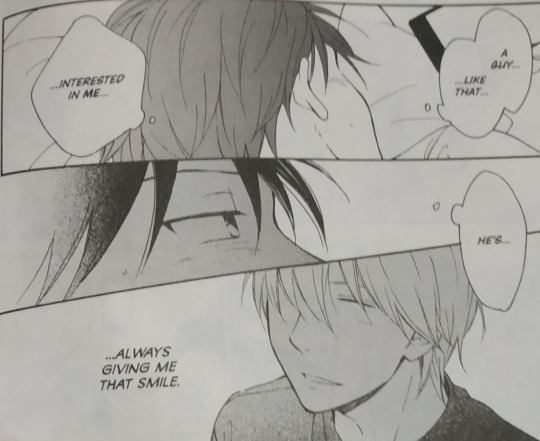
One thing that we get a clear picture of in the first volume is how Wataru doesn’t really think highly of himself. While we mostly see this in the context of how he is compared to Saeki - the very first chapter has someone point out that they might as well be different species - we also get a sense of this with how he doesn’t really do well in class without Sekiguchi’s help, and in how he says “It doesn’t have to be me” when he’s thinking about Saeki’s initial confession.
We get a lot more of that introspection in this volume, extending even to aspects beyond his relationship. Saeki is shown to have taken interest in pursuing being a translator, while Wataru remarks that his plans about his future are nowhere near as solid. This is interlaced with Wataru’s doubts about how he isn’t really putting any effort in the relationship, as he recognizes that most of the advances come from Saeki, and he even has several moments where he feels like the constant nervousness and uncertainty of the situation only ever comes from him. Wataru even says that Saeki is “out of his league,” which recontextualizes all the times where he points out that Saeki’s this hotshot who knows all the right moves - though, of course, it’s nice to know that Wataru does think his boyfriend is hot.
But while this sounds like an exhausting premise for the story to revolve around, My Summer of You is able to avoid making this a drag by constantly proving Wataru wrong - although it’s more to the reader rather than to Wataru himself. Probably the most blatant example of this is when Wataru gets invited by Niimi - one of the people he works with - to a movie premiere. He initially accepts the invite as it would include an appearance of one of his favorite actresses. But after thinking about it, he eventually turns down the offer, telling his workmate that he’d rather see the movie first with someone else. Niimi immediately picks up that Wataru is referring to a significant other, and he makes the surprising decision of giving Wataru both of his tickets so that he can go to the premiere with Saeki.
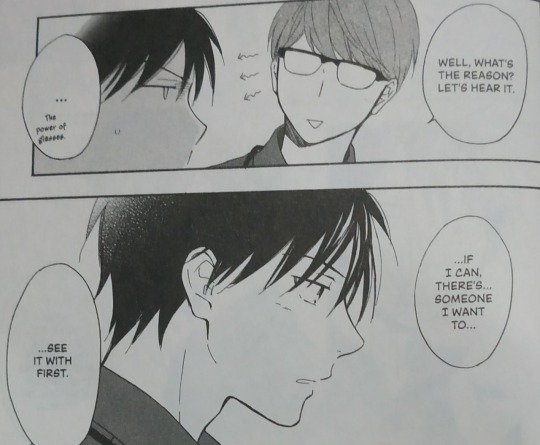
Wataru being Wataru, he doesn’t really think much of this decision, and certain things that happened around the premiere actually leave him in a more dejected state than usual. But when he tells Saeki over the phone about what happened with Niimi, Saeki is visibly overwhelmed with what Wataru did and immediately asks him when they can see each other again. Like I allude to above, Wataru himself doesn’t realize what Saeki’s reaction means, but we as readers know that Wataru’s doubts about him not pulling any weight in the relationship are not true at all.
And then there’s the jealousy, which leads to the closest thing to a climactic scene that this volume has to offer. There’s an almost throwaway line right at the start of the story where Saeki teases Wataru in saying that he wished that the latter would get more jealous when women hit on him. You can almost read it as simply light-hearted teasing, which goes well with Saeki’s bravado - and it’s also a nice callback to the second bonus chapter in the first volume - but then Wataru revisits these thoughts later in the story, coming to the conclusion that the reason he doesn’t really feel the way is because he trusts Saeki enough to know that he only has his eyes on him.
That’s a nice and sweet note to end it on, but the story pulls the rug under us and revisits this bit again in less-than-ideal circumstances. Early on we’re introduced to Akiyoshi, one of Saeki’s close friends in his university, who at first doesn’t really do much and is just there to add some color to Saeki’s scenes at school. But he shows up again later in the story and bumps into Wataru, who finds himself lost in a huge crowd and unable to contact Saeki as he doesn’t have his phone. It’s here where Wataru finds out that Akiyoshi calls Saeki by his first name, which suddenly ignites an unfamiliar feeling within him. When he confronts Saeki about it, he’s surprised that instead of Saeki ridiculing him for it, it leads to the two of them taking their relationship a step further.
It’s here when I realized that the whole scene about Wataru realizing that he doesn’t feel jealous about the girls hitting on Saeki has a much sadder undertone to it. While I could easily read it as Wataru being completely trusting of Saeki - and I’m sure that’s still true - I can also read it as Wataru thinking that there’s something wrong with how he sees the relationship if he can’t even bring himself to be jealous when someone is hitting on his boyfriend. You can easily relate this to all of his other moments of self-doubt, so that final scene where he does realize he’s jealous was just as much of an overwhelming feeling for Wataru as it was for Saeki. That the fact that Wataru feels jealous has to be told to him by Saeki isn’t lost on me either - it’s a good reminder that this is Wataru’s first relationship, and it’s with someone who’s been in several since middle school.
It’s also important to note that Saeki does recognize his boyfriend’s insecurities. We get bits and pieces of it throughout the main story - especially in the end when Wataru finally gets told that Saeki is just as nervous about the relationship as he is - but once again, this volume makes good use of its bonus chapter to give a bit more insight on Saeki's perspective of the relationship. Here, he recognizes that Wataru is pretty clueless about how to handle the relationship, but he doesn’t think less of him for it - in fact, Saeki appreciates that despite his confusion, Wataru still makes the effort to be a good boyfriend. While I would’ve appreciated this to actually be vocalized, I just chalked it up as something that they’re working towards, and you definitely get a sense of that by the end of the story.
And I think that’s what makes this second volume such an interesting read, right down to the wordplay in its title. The original Japanese title changes My Summer of You to My Summer with You, which the English translations preserve through the subtitles. Of course, there’re a lot of great ways to interpret this, but for me, the most important one is how this is a relationship that both Wataru and Saeki are putting a lot of effort into, no matter how much the former doesn’t believe it.
Random thoughts that I couldn’t fit elsewhere:
I’m glad that they didn’t make Akiyoshi a third party to the relationship, and he’s even shown to get along well with Wataru. He even ends up indirectly reaffirming to Saeki why his feelings for Wataru are genuine, as his boyfriend is someone who’s willing to “run after him.” As much as I wanted to know more about him, I think the way Akiyoshi was used in the story was pretty nice, showing up enough to see why he’s a good friend to Saeki but not taking too much of the limelight from the main dynamic.
I couldn’t say the same for Sekiguchi, though, who I absolutely wanted more scenes of since he’s such a bro. I liked how we got some closure from the first volume about what Sekiguchi thinks of the whole Saeki situation, and while he’s rightfully still mad at Saeki about that, he does respect Wataru’s decision to still hang out with him. Once again, he has a very mature take on the situation, so I’m glad that we at least got this scene from him.
I’m still making sense of that last scene in the main story, where they go to Wataru’s choice for their summer pilgrimage - a “deserted island” that ends up being a popular tourist spot. I know that they bring up the parallel of the park in Volume 1, but I do think there’s more to it than that. Maybe it’s to show that Wataru’s finally on track with his thoughts about the relationship, which is why we see them in a place that he decided on? Seems like a weak connection, but that’s all I’ve got.
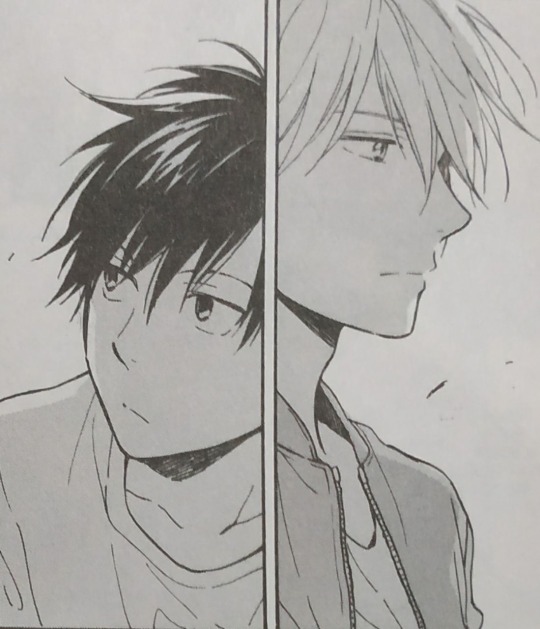
Thanks for reading! You can read my review of My Summer of You’s first volume here. During my first read, I found myself liking the first volume more than the second one, but after rereading both of them for this project, I ended up appreciating the second volume a lot more. I thought this had a more solid execution of what it was trying to do, and there were a lot of little plot bits I picked up that I previously didn’t.
#My Summer of You#My Summer With You#Kimi to Natsu no Naka#Nagisa Furuya#Wataru Toda#Chiharu Saeki#bl manga#manga review#manga
8 notes
·
View notes
Note
I really love your art of Tsukishima with Chiyo and Koito... it has my head swirling with vague ideas of like... Koito snooping around and vaguely finding out about the tragedy that was Tsukishima's relationship with her, and deciding to find her as a surprise gesture for Tsukishima. what Koito doesn't realize is that Tsukishima had firmly decided not to involve himself in her life and just let her think he was dead, because it had been too long, she probably has her own life by now, and he's done so much since he knew her... etc.
so he makes it happen... he finds Chiyo and gets her and Tsukishima in the same place at the same time, and of course she's ecstatic to know he's alive. but it is complicated, and emotional, and at first Tsukishima is borderline furious with Koito, but that's just because he had been going along so dead inside, and now he's literally feeling years and years worth of emotions at once, and every single one of them is a lot. it takes a long time to sort everything out, but he and Chiyo probably spend a significant amount of time practically attached at the hip because none of this even feels real yet.
Chiyo ends up really liking Koito because he actually cared enough to bring them back together... and she's especially grateful when she learns that Tsukishima never planned on finding her again. she doesn't blame him... clearly there were a lot of factors that led to that mindset, but that's why Koito was especially necessary. also, Chiyo's life hasn't been bad or anything, and Tsukishima kind of crash landing in the middle of it might cause some friction... but she really reeeeeally never got over him, and she's never giving him up again, if she has anything to say about it.
so basically ot3 happens over time because Tsukishima and Chiyo kind of owe their whole repaired relationship to Koito, and Koito is just charmed as hell by anything that either of them do. he's literally never seen this many emotions in Tsukishima for the entire time he's been around him, and it totally recontextualizes everything Koito thought he knew about Tsukishima. and Chiyo is more than happy to chat with Koito about how Tsukishima used to be, or hear stories about what Koito and Tsukishima have been up to... it's super cute.
anyway! your art is perfect and it makes me so happy
Thank you so much!!! I love your headcanon tbh :DDD I had some ideas about how Koitsuchi would come together. It's a little bitter at the beginning tho.
Basically, Koitsuki are together but Koito notices Tsukishima gets sad and avoidant whenever he does some gestures so after learning about Chiyo he secretly finds her but only because he NEEDS to know and let her know what's going on and because he NEEDS to make sure that respecting hers and Tsukishima's decision to leave things as they are is the right thing to do. (Side note, he introduces himself as Tsukishima's superior and close friend.)
Chiyo confesses (even tho he's a stranger) that despite not being able to give her husband a child he still loved her and she loved him as well, stating that she is very happy and wishes Tsukishima to be happy as well.
Then, the WTF part:
After almost a year passes when Koito receives a letter from Chiyo's husband asking to meet Tsukishima so he panics and tells Tsukishima who reacts borderline furious (just like you say xD) But Koito convinces him to accept as a way to get closure (and that if he tries to do something they can kill him in self-defense😂) so they're shocked when, after a long interview, Chiyo's husband surrenders her because he's very sick. Like, what?
The comical part is Chiyo's husband doesn't know that Koito is more than a friend to Tsukishima so he thinks Koito's troubled face is due to a stomachache💧. Then Tsukishima finally gets to see Chiyo, it's very emotional, Koito is happy too but sweating cold, trying to supress a mental breakdown🤡.
Note that Koito wasn't trying to get them together (not the most wholesome thing but I personally think Koito wanted to keep Tsukishima😂) so he kinda dislikes her but she's so nice he's not capable to be rude to her. Koitsuki don't know what to do. One day Chiyo has a talk with Koito confessing she knew from the beginning that Koito was more than just a friend to Tsukishima. And for some reason, BOTH, AT THE SAME TIME, think "what if we share??" And both know what the other is thinking👀.
So yeah, fanfic xD
29 notes
·
View notes
Text
On Lord Hawthorne

A lot of what makes Lavender Jack special to me is the way it’s so masterfully able to create engaging, modern material out of it’s influences, and it’s creation of a genuinely timeless pulp icon that I think should serve as the ideal baseline for any and all creators who want to create stories based on pulp characters, old and new alike, in the future.
As I make my way through Season 2 and eagerly await Season 3 I’d like to take the time to talk a little about the often overlooked half of the villain duo of Season 1, Lord Hawthorne, and what I think is interesting about him. Out of the many ways pulp heroes have been reimagined into villains over the decades, Lord Hawthorne stands out to me as easily one of the best ones, as a thoughtful take on the Tarzan character.
Spoilers before the cut

The first thing everyone immediately picks about Lord Hawthorne is that he’s Tarzan, with hardly any ifs or buts about it. He’s Tarzan, and we quickly learn that he’s the villain, part of a villain duo with Lady Hawthorne, the real mastermind and kingpin in pearls behind the story’s events. Having Tarzan as the villain n a story that draws from pulp and Edwardian fiction is already an interesting start, as three of the most popular molds from which are pulp heroes are based on, three of the most popular characters as icons, are Tarzan, the Scarlet Pimpernel, and Sherlock Holmes, all three of which exist in some capacity in the world of Lavender Jack. The Gentleman Villain, The Great Detective, and The Wild Man.
Lavender Jack, as I’ve mentioned, is based on the Pimpernel, as well as other figures such as Spring-Heeled Jack and Bertie Wooster. Jack draws from icons that largely predate the pulp heroes because, in Schkade’s own reasoning, if you’re going to try and create an authentic pulp hero, it only makes sense to use as a base the characters that largely inspired them, and clearly that worked out very well. Jack is a Pimpernel remodeled and recontextualized into modern sensibilities, into an era of superheroes and webcomics.

In the Great Detective’s case, we have the figure of Madame Theresa Ferrier, who is called into the story by the Mayor to try and solve the mystery of Lavender Jack’s identity. Schkade describes Ferrier as a character that pulls from elements of detectives like Hercule Poirot and C.Auguste Dupin as well as Sherlock Holmes, in particular Jeremy Brett’s later year performances. As he describes:
In the series’ final years, Brett was getting older, sicker, hindered by bipolar medications that sapped his energy and caused him to gain weight, and he used it. His Holmes became a fading, melancholic shadow of his younger self, but with the spark of his brilliance showing through when it counted. I always found that so compelling
Ferrier is repeteadly described in-universe as “The Great Detective”, and she is both the oldest as well as the most brilliant character in the comic. Despite her age, despite her physical complications, and the tragedy that surrounds her love life, she is nonetheless incredibly skilled, strong and resourceful, able to unmask Jack and survive a confrontation with Lord Hawthorne and even nearly beat him. Ferrier draws from the Great Detectives of old, but this is a character that could never be mistaken for any of them. She’s not specifically based on any of them because, as Schkade puts it: “I wanted her to be someone I’d never get to draw in a leading role in most of my work-for-hire jobs”.
Her role in the comic ends up being one of mentorship to Jack, and despite her age being emphasized as well as the idea of her belonging to an older generation of great heroes that now gives way to the younger and hot-blooded Jack as well as Ferrier’s new partner in Honoria Crabb, Ferrier is very much another great example of where the old meets the new in Lavender Jack. Pulling from the great old archetypes but very much recognizable as her own thing.
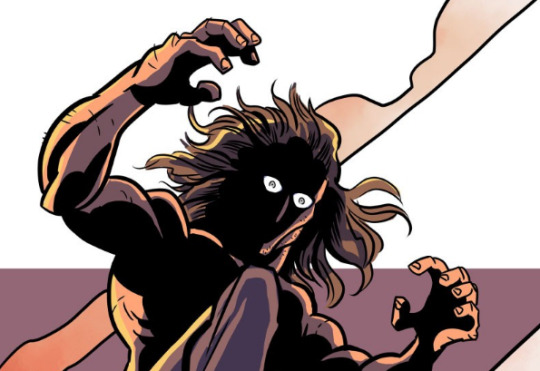
Thing is, when it comes to Lord Hawthorne, we don’t really get that, because Lord Hawthorne isn’t really combining the idea of Tarzan with a splash of something new and outstanding and modern. He really is just Tarzan, and not a terribly layered character at that, for much of the story he’s largely just a voiceless bulldozer who exists to do the dirty work of Lady Hawthorne no matter how dirty. This isn’t at all a criticism, because I think Hawthorne being just Tarzan, with little to no bells and whistles and twists on it, is central to what makes him work not just as a great physical threat Jack must overcome (in a similar way to Bane as both a monstrous powerhouse and also having a strong connection to a powerful pulp hero), but also someone whose tragedy comes to light as we finally learn more about him. The fact that he is monosyllabic and largely devoid of any personal interests or life outside of being muscle for Lady Hawthorne is something deliberate, as outlined in a speech given by another character in Chapter 39
Her world's been changing for years, now. She's taking her place in a wider game. A more nuanced game. And you're still...Why, you're only good for one thing, aren't you? Well, maybe two, you old hound, you.
I know why you spend vast stretches of the year off in that jungle. It's not for sport, it's not to keep your edge...it's because when there's no need to fight, no struggle to win, no enemy...there's just...you.
And you know there's not really anything to you, underneath all those scars and muscles.
No dreams, no warmth, no depth. Nothing to love.
So you stay away...and that way, you can come when she calls you. You can sweep back to Gallery and show up all filthy and draw her into your powerful, savage embrace....and maintain your novelty.
All of this so you'll never have to endure a silent sunday afternoon where there's nothing to do, any no one to kill, and your lady simply...doesn't...need you.
You do know this word, don't you, Hawthorne, old fellow? "Novelty?"
And how does he respond?
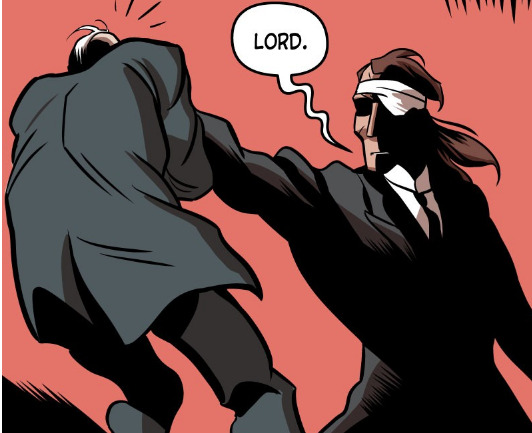
Not with a denial, but an affirmation that this is ultimately all personhood amounts to, in his worldview. Just one more thing to be conquered and then used as a club to batter others with.
The very act of a character questioning their own worth and depth of personality usually tends to be a telling sign that they, in fact, have those things even if they are out of touch with them, but Hawthorne doesn’t particularly rebuff anything Van Lund’s saying. He just reaffirms his title as Lord while threatening him with violence, because violence is all he knows.
As we later learn, Lord Hawthorne isn’t, in fact, the real Lord Hawthorne, but instead he and his wife usurped the title from the real one as they escaped from the jungle, where he was only known as “the wild man”. A man who’s been forced his entire life to live in a kill-or-be-killed world, to live as an animal in constant conflict with humans, was then captured and then brutally tortured every day for over a month, and then found for the first time someone who treated him with something resembling affection, someone who ultimately turned him into a tool for her evil designs, and he readily accepts this because he has no life, no identity, outside of her. He doesn’t even know his own name.
In fact, for all we know, he might as well be John Clayton himself, except he was born in a world where being Tarzan is not the greatest thing ever and there was no Jane or ape mother to guide his malleable heart into something resembling good, and there was only Sarah to mold him into an instrument of murder at his lowest point.
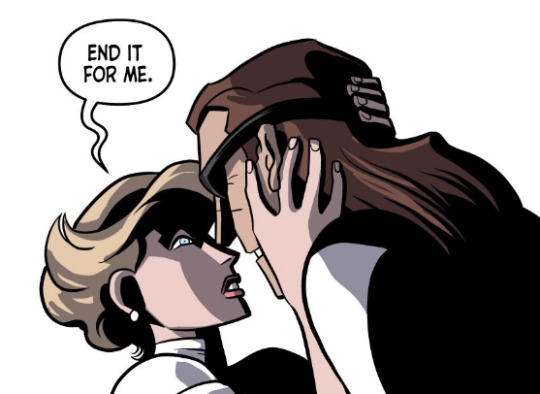
I argue that Tarzan is a character that’s all about freedom and vitality, as a heroic take on an archetype that’s long been the missing link between superheroes and monsters, where the dual nature of mankind between person and ape acts not as a disorder or source of conflict but instead as the ultimate power fantasy in a character who gets the best of both with none of the downsides. Lord Hawthorne isn’t necessarily a return to form, because there is no dual nature to him. There is no gentleman, no Lord Greystoke descendant of nobility, romantic hero and great adventurer and leader of men and whatnot. There is only the ape, and what little façade has been grafted onto him by his master so he can pass off as a person, only long enough until he takes his shirt off and starts murdering people for her. While we get long extended close-ups of the icy cruelty in Lady Hawthorne’s eyes, there is none for Lord Hawthorne, because he is not cruel, he is an animal. He’s not a fighter, he’s a survivor. He lives to kill and serve the person who tells him who or what to kill.
Lord Hawthorne is what happens when you strip the Tarzan legend of the romanticism of fiction and you look at it for what it would likely result in: the tragic story of a child forced to grow in the jungle, where the concept of personhood and human decency are utterly meaningless and there is only survival, where his existence is at odds with the worlds of man and animal alike, and what happens when that sort of being receives a first contact with something resembling decency and love. Even if said first contact wasn’t with someone as evil as Lady Hawthorne, there was little chance Lord Hawthorne’s life was ever going to be anything other than just an extension of his life in the jungle, or end in anything other than tragedy, and ultimately even the characters start to pity the wild man.
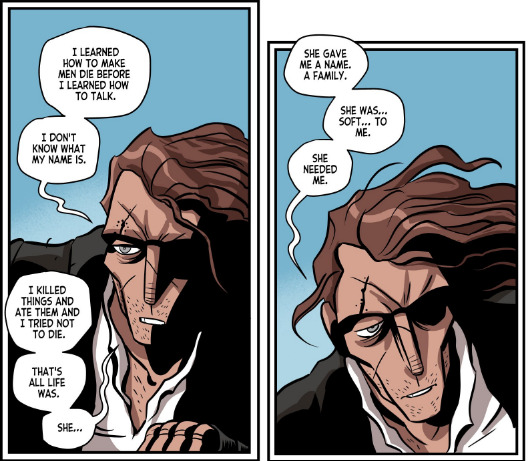
Jack: All that power and stamina and fighting acumen, but yet all you seem to get to use it for is...this. Another laborious climb to another locked-room murder.
Ferrier: You've long passed the point where human lives hold any meaning. You are detached from our species, a...a stranger, loose among us. I thought the sight of you would stir distain in me, or even fear...but as I look at you now...I feel for you only the strangest sort of pity.
What I like most about Lord Hawthorne as a take on Tarzan is that, far too often, we see intended “deconstructions” or reinterpretations of the classic pulp heroes, or even superheroes, that largely just make them villainous by extrapolating the worst possible interpretations of the character’s traits or real-life circumstances around them to villainize them, or outright invent faults and problems that weren’t there in the source material, usually to put one character over the other. The entirety of League of Extraordinary Gentlemen is built on this, as is a lot of Superman parodies built on getting the most graphically shocking results possible.
I'll admit it’s somewhat hypocritical of me to criticize this entirely, because it’s an impulse that I sadly admit I myself have fallen into in my own writings on characters not my own, as anyone who’s ever talked with me about Doc Savage, a character I do not like and cannot bring myself to like, can testify. I get why this happens, even if I understand why it’s shitty. Ultimately, the best “deconstructions” or reinterpretations will always come from people who are best familiar with the material they are using and know exactly the best ways to twist it, like with Mark Waid’s Irredeemable, an Evil Superman comic written by a huge Superman fan who knows exactly the absolute worst ways a Superman character can go sour, and was leagues ahead of works like The Boys and Brightburn who largely just take the “easy” pot shots.
With Lord Hawthorne, we get a character who’s an evil take on Tarzan, but whose evilness isn’t made from exaggerating or adding faults to the source material character, which could very easily be done. I never got the sense that the author hates Tarzan and wants everyone to hate Tarzan and is willingly to sacrifice immersion just to get across how much he hates Tarzan (again, something LOEG does way too often), in fact it really doesn’t matter how the author feels about Tarzan, because those feelings are irrevelant to what’s on the page.
Instead, Lord Hawthorne is an evil take on Tarzan whose characterization is largely based on just looking at the source material, the character’s origins, and extrapolating the circumstances in which that could go sour. What would a “wild man” forced to grow up and fight for survival every day in the jungle look like, what would that person look like when making it’s first contact with human affection, how could that person be twisted and manipulated into becoming a villain, what’s even left to that person outside of violent action scenes. How little it would take to twist a childhood hero into a brute that murders old women in their hospital beds, just by tweaking a few details about the context surrounding him.
He is not a caricature of Tarzan, he’s not a parody, he is just Tarzan, but no longer the power fantasy. No longer the center of fantastical adventures. No longer getting the best of both worlds, but instead having to contend with the worst of them. Ultimately only finding some dignity in death, with his nemesis expressing hope that, maybe somewhere else, he’s going to have better luck than what this world afforded him.
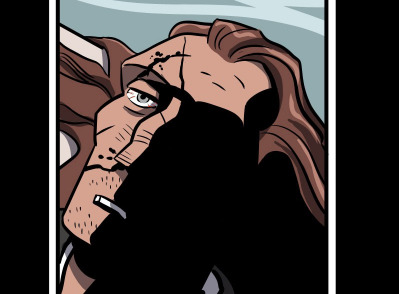
#lavender jack#pulp heroes#comics tag#lord hawthorne#dan schkade#far from my favorite thing about this comic but#that in itself should be a testament to just how amazing lavender jack is#please go read it
38 notes
·
View notes
Text

Harvey Birdman, Attorney at Law #1: "Bannon Custody Battle" December 30, 2000 - 4:30AM | S01E01 Welcome to the first episode of Harvey Birdman, Attorney at Law, the first show on Adult Swim’s roster that I rejected as a substandard product. It should’ve been the Brak Show. In the opening episode, Birdman takes a case from Dr. Benton Quest, better known as Jonny Quest’s father. Race Bannon is fighting for custody of the boy, arguing that he’s a much better, much more present father figure to Jonny. Harvey Birdman was first conceptualized with an episode of Space Ghost Coast to Coast. In the episode “Pilot” we’re shown a supposed disastrous pilot episode of “Coast to Coast” where Birdman was originally attached as the star. Birdman, a depressive, out-of-work super hero, utterly botches the job as his inability to host a late-night show due to his deriving all his powers from the sun becomes more apparent. The character recurs a few more times, most notably in the episode “Sequel”, where Birdman guest-hosts the show. Still, to call this a proper Space Ghost spin-off requires carrying a big asterisk along with it. The character name “Harvey Birdman” was invented for Space Ghost, but besides both being based on the old 60s Birdman Hanna-Barbera show, they have little to do with one another. One would get almost nothing out of watching the original Space Ghost episodes before watching this (except for, you know, getting to see episodes of a much funnier show).

So in Harvey Birdman, Attorney at Law you have one 60s Hanna-Barbera character as a lawyer taking court cases from various other Hanna-Barbera characters, usually of a similar vintage. In this particular episode we’re treated to a lot of jokes about the homoerotic subtext of Jonny Quest, specifically the relationship between Race Bannon and Benton Quest. The writers decide to tastefully side-step the seemingly pederast relationship between Race and Jonny. Watching the original Jonny Quest with the same attempt to subvert and recontextualize the relationships between the characters through a modern lens, a certain type of observer would probably note the amount of shirtless roughhousing Race does with Jonny. Speaking of watching Jonny Quest: I have to admit something: I never really watched Jonny Quest at all before writing this blog. I’ve had an interest in older shows and cartoons my entire life, but the entire genre of action cartoon didn’t appeal to me whatsoever when I was a kid. So last night I watched my first episode of Jonny Quest, in glorious 1080p on my new 4K television; a format it was never EVER intended to be viewed in. Jonny Quest is objectively junk. It’s fun, boyish, escapist entertainment, and there’s a lot of good irony in it, especially with it’s antiquated portrayal of other cultures from a bygone era when we were far less connected to the rest of the world. It has limited animation and simplistic design. The backgrounds look like they were painted on a post-it-note and most of the men are drawn to look like reskinned versions of Race Bannon. But there’s at least something a LITTLE charming about it. In fact, there was one moment of beautifully scripted action that absolutely won me over: Race and Jonny’s speed boat goes airborne briefly and crushes the bad guy’s boat from above as they speed towards one another. I nearly cheered when it happened. I knew The Venture Bros took liberally from Jonny Quest, but the coolest action sequences on that show seemed to be striving for the same exact visceral reaction I got from seeing Race crunch up some lizard men on a boat. Birdman is a similar deal: He was a cookie-cutter imitation of comic book heroes from the silver-age of comics (the obvious comparison here is DC’s Hawkman). I actually did watch a Birdman adventure late last night as I was falling asleep to follow up on Jonny Quest, but it felt less important. I can remember checking out the original Birdman on DVD not too long ago. Also, your typical Harvey Birdman usually focuses on jokes about shows other than Birdman. Still, it’s neat to see those characters in their original context, as well as that Hanna-Barbera stock-explosion animation we all know and love from Space Ghost blowing up Zorak on Coast-to-Coast. Also the episode I watched will be heavily referenced later, but not for this. I only watched the first episode of Jonny Quest taking a cue from my friend Kon who noted that most of the references in “Bannon Custody Battle” are directly from the first episode. The most specific (and funniest) scene in the whole show involves the Lizard Men, the main villains of that first installment. Other characters show up very briefly, and are all ones that appear in the opening sequence. Unless I find out differently (I’ll probably try to make my way through the rest of Quest in preparation for Venture Bros.), it really does seem like the writers just watched the first episode of Jonny Quest to write this show. Watching this episode of Harvey Birdman was like batting away an existential crisis. I remember vaguely at the time not being SUPER hot on this show, but I cut it a lot of slack and trusted that it would simply get funnier. I wanted to love all the shows on Adult Swim. Anyway, I went from being lukewarm on Birdman, to hating it. Reading my own earlier review of Birdman I blasted this episode for being homophobic. I used to have a very low tolerance for gay jokes, back when they were highly in fashion. But now that we live an era where there’s an arms race to find new ways to scold one another for perceived slights gay jokes can sometimes, NOT ALWAYS, be a little refreshing to hear. The fact that my stance on gay jokes can change as long as it’s in direct-opposition with the rest of the world is at least a little troubling. Does this mean I’m an inauthentic reactionary? Yes. Yes it does. There, I admitted it. Now, let me off the hook, please. I say that sorta jokingly. The gay jokes in this are mostly pretty lame, and come off like Mike Scully-era Simpsons gay jokes. The early scene at the beginning where Birdman eyes widen when he’s misunderstanding the nature of Dr. Quest’s and Race Bannon’s relationship really does come off as early 90′s homophobia. I remember it seemed out of place at the time. I’m sure it played just fine in the midwest, but the show didn’t really put it’s best foot forward with that. Speaking of lame jokes, this episode has a few that have nothing to do with insulting gay people. One of my least favorite bits involve the specific gag of undercutting a dramatic moment with characters fumbling around awkwardly in true-to-life fashion. Why, if a person tried to recreate a dramatic sting you’d see before a commercial break in real life, you’re right, it’d probably go awkwardly! But this 11 minute show has at least 3 explicit examples of this, and it’s only mildly amusing once:
Bannon dramatically walks out on Dr. Quest, after announcing his intention to take Jonny with him. He awkwardly comes back because he forgot his keys
Birdman dramatically argues with a rival prosecutor and summons his personal digital assistant, and then awkwardly fumbles with it
Birdman proves that the Race Bannon on the witness stand is actually a robot by unplugging him, but he accidentally pulls the wrong cord and has to spend a few seconds untangling and retracing the correct cord.
Another thing about Birdman is that there is usually a lack of strong jokes. The show usually includes a layer of comedy where there are simply characters who simply have odd, scattered speech patterns or odd ticks. The rival lawyer in this slurs his speech in a particular way: cut to the jury looking confused. That’s the joke. The Judge grumbles in an ornery fashion and generally acts like he doesn’t wanna be there. He says stuff that sounds like bad improv. That’s the joke. The show will only ocassionally come up with jokes to justify these character traits. It’s just silliness that doesn’t usually go anywhere. But, I do kinda like some things about this episode. It was animated by J.J. Sedelmaier, known for early digital animation seen in the crude era of Beavis and Butt-head and SNL’s TV Funhouse. They really do have their own style of comic timing, and there are some gags in this where the animation works in their favor. There are some jokes where the drawings really sell the comedy. I’m not sure if I liked this animation better or worse, but it does match the oddly-stilted Jonny Quest animation better than the episodes that came after this would have. Oh, one of the funniest bits not on the show was when I popped in the DVD I forgot that the menu music is Wesley Willis’ “Birdman Kicked My Ass”. If I were in high school when the DVD came out I would have loved it just for that reason. Same could be said “Jonny Quest Thinks We’re Sell-Outs” by Less Than Jake. I was an easily impressed kid.
10 notes
·
View notes
Note
i don't ask this with intention of being like One is Better that the Other, but more like understanding them better; how would you say peter's relationships are different form each other, in a nutshell? (or just with gwen and mj?)
That’s a valid question because they are very different relationships and while I don’t like talking about them with the view that One Woman Is Better For The Man Than This Other Woman, Therefore Other Woman Is Terrible, I do think it’s important to acknowledge those differences and they’re interesting to talk about.
Here’s the thing: in 616, I think it’s very important that Peter and Mary Jane aren’t each other’s first relationship. We don’t know as much about her relationship history as we do about Peter’s – we know she’s seen other people, including Harry, but I think it’s important to keep in mind that for the majority of her life, since she was fourteen years old in canon, she’s known Peter was Spider-Man and for a long time kept that secret to herself. (We also know as per ASM #259 that serious relationships justifiably scare her – but I’ll get to that in a moment.) But Peter seriously dated Betty Brant when he was in high school, and, though I don’t think it gets talked up enough in discussions about Peter and Gwen, before Gwen’s death she and Peter were very much planning to get married.
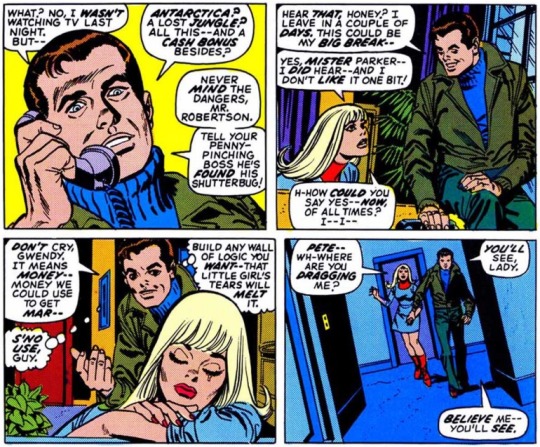
(Amazing Spider-Man #103)
Cut for length.
(Peter had also briefly thought about proposing to Betty Brant at the end of high school. He’s a marriage monster.)
If I had to use one word to sum up Peter and Gwen’s relationship it would be “passionate.” And not always in a good way. They have a very fast connection in comics, but initially, they don’t really like each other that much.

(Amazing Spider-Man #35)
They’re on the same wavelength – that wavelength just happens to be “this hot person pisses me off so bad.” But then John Romita sweeps in and things get romantic as opposed to Ditko’s more prickly, vampier Gwen take, and Peter and Gwen start to get closer. That Mary Jane enters the picture and is seeing Peter probably doesn’t hurt Gwen making a more aggressive move on him. One thing I want to clarify that in modern day the word “dating” conjures up, first to mind, a serious image when we talk about fictional relationships, but Peter and MJ were very casually seeing each other after they first finally came face to face, something that seemed to annoy Peter actually:

(Amazing Spider-Man #44) In Webspinners #1′s backup story, The Kiss, Peter describes MJ at this point in time as mercurial and indirect, and says that’s one of the reasons he was more attracted to Gwen at the time. Gwen’s very direct, very passionate, and very open with her emotions, whereas Mary Jane and Peter both have their own secrets. It makes a certain amount of sense that Peter would be drawn to that openness. Peter and Gwen also have a keen interest in the sciences in common, which I also think is a pretty important factor in their early courtship when you consider part of the reason Peter felt isolated in high school was that his classmates didn’t share his interests:
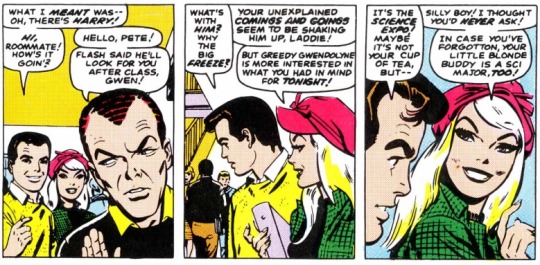
(Amazing Spider-Man #53)
Once Peter and Gwen are together, things get pretty serious pretty quickly, with lots of sappy love declarations and both of them bringing the other around their parents.
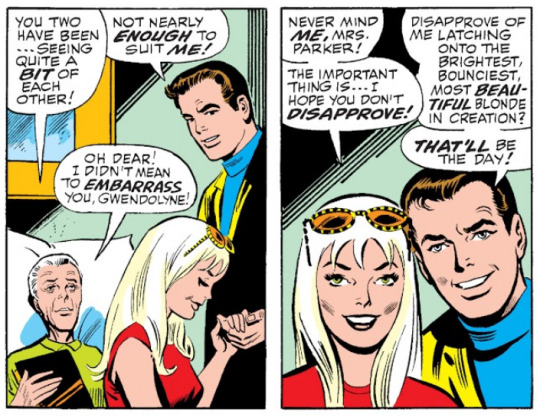
(Amazing Spider-Man #68) Like I said, one of the things I often see overlooked in discussions about Peter and Gwen is just how serious the relationship was at the time of Gwen’s death. They were if not officially engaged then definitely pre-engaged and making plans for marriage. Peter had even wrangled his way into a staff position at the Daily Bugle specifically with his future marriage to Gwen in mind.
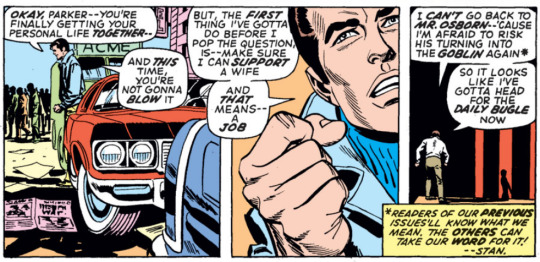
(Amazing Spider-Man #99) Peter used to be super good at this whole responsibility thing, in both his costumed and uncostumed lives.
This isn’t to say Peter and Gwen didn’t have problems – while people paint an image of the college days before Gwen’s death as being some big MJ/Peter/Gwen love triangle, that’s not really true. MJ had a tendency to flirt with Peter, especially in front of Gwen and also Harry, who MJ was seeing at the time, but it was Peter who was at times irrationally jealous of Flash’s flirting with Gwen.

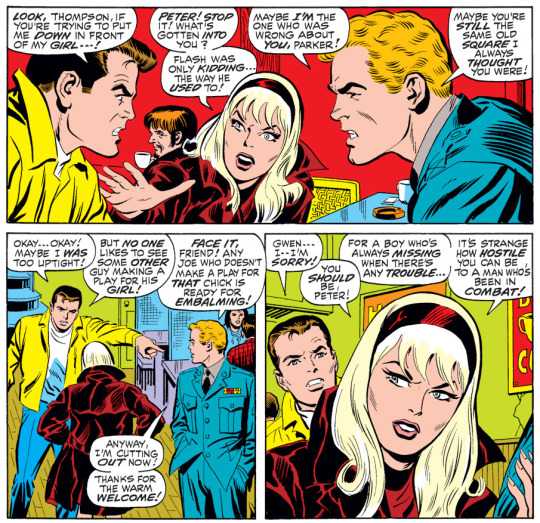
(Amazing Spider-Man #72)
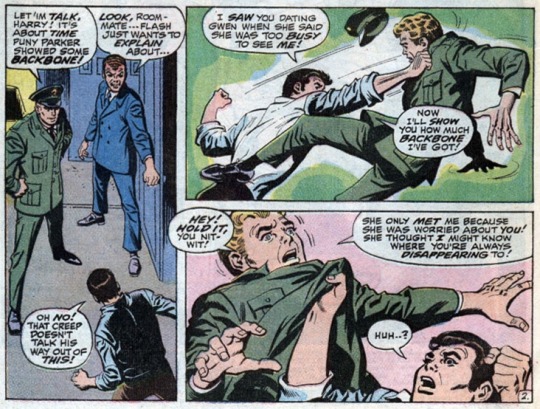
(ASM #80) Poor Flash really suffered as the least dramatic member of this friend group. It’s a little ironic that Peter got so heated up about Flash of all people because, while Flash does at one point profess more than friendly feelings to Gwen, he’s exceptionally gentle about it and never actually tries to threaten her relationship with Peter.
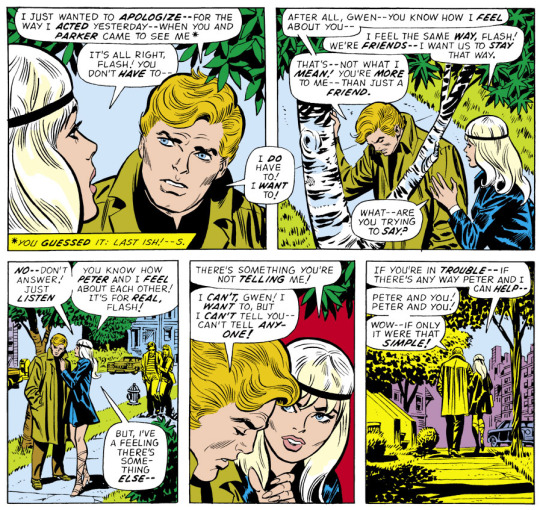
(Amazing Spider-Man #107)
On Gwen’s side of things, Peter’s frequent disappearances troubled her, and she often begged him to stay with her in times of danger – when he was trying to slip out and discreetly change into his Spider-Man costume – so that Peter would prove to her that he wasn’t a coward. (Look, it was the 60s and 70s in superhero comics and machismo was a big deal.) She could be insecure – Peter’s disappearances sometimes made her think he didn’t love her anymore, a feeling which was compounded when she accidentally lost her temper and yelled at Aunt May about her tendency to coddle Peter, causing May to put some distance between them, and after the death of her father, for which she initially blamed Spider-Man.
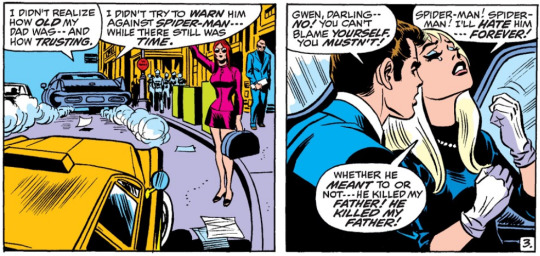
(Amazing Spider-Man #91) It was that hatred of Spider-Man that made Peter hesitate proposing to her initially, and she briefly left to stay with her uncle and aunt in England thinking that he didn’t care for her as much as she did for him. All those are, when you get down to it, far more serious issues in the relationship than the notion that Mary Jane and Gwen were constantly fighting over Peter.
I said if I had to pick one word for Peter and Gwen’s relationship it would be “passionate” – but I think that’s in part because Gwen herself is a very passionate character. For all her emotional openness compared to Mary Jane’s at the time party girl facade, Gwen felt very deeply about everything, especially about her relationship with Peter. I don’t doubt that if Gwen had lived, she and Peter would have gotten married – it was the natural progression for their relationship at the time. However, I’m not sure they would have stayed married, and not for any “selling the marriage to the devil” reasons. I’m sure they would both have tried very hard to make it work, and I don’t think separating would be easy for either of them, but I’m just not sure if I see them as a successful long term relationship. (Which, for the record, doesn’t make me ship them less.)
With that in mind, I also don’t know if I think PeterMJ happens without Gwen’s death – at least, not in the specific way it does in comics. While he was definitely initially attracted to her – it’s a running joke before Mary Jane appears on panel that Peter desperately tries to avoid meeting her because he thinks that, because Aunt May approves of her and says she’s a nice girl, that she’ll be ugly, which is where Mary Jane’s famous “face it, tiger” line comes in when she reacts to his surprise at the door – the further in love Peter falls with Gwen, the less intrigue Mary Jane seems to hold for him. Before Gwen’s death, he’s even disapproving of her advances, and dislikes the fact that she hits on him in front of Harry when she and Harry are dating.
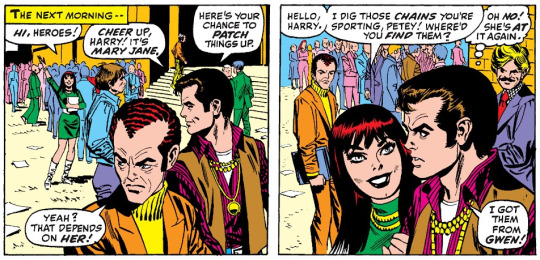
(Amazing Spider-Man #97)
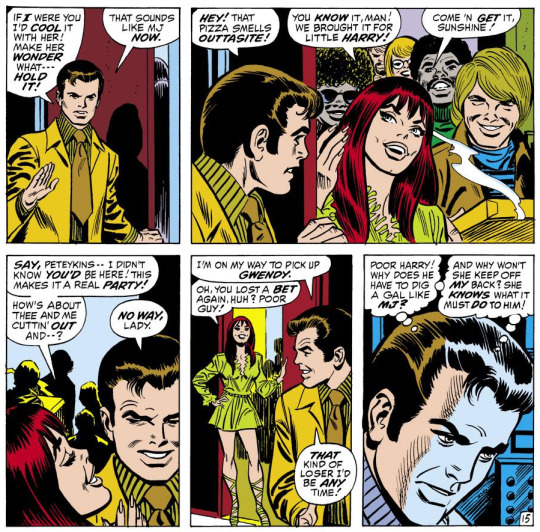
(ASM #106)
At the time of Gwen’s death, Peter’s impression of Mary Jane isn’t the most favorable in the world: he thinks she’s a flighty, irresponsible party girl – which, to be fair, is the impression Mary Jane has put some serious effort into cultivating. This changes with Gwen’s death with one very important scene that signifies – not necessarily to Peter, who is lost in his grief at the moment, but to the readers – that that’s not who Mary Jane is at all, and it’s the door scene from Amazing Spider-Man #122.
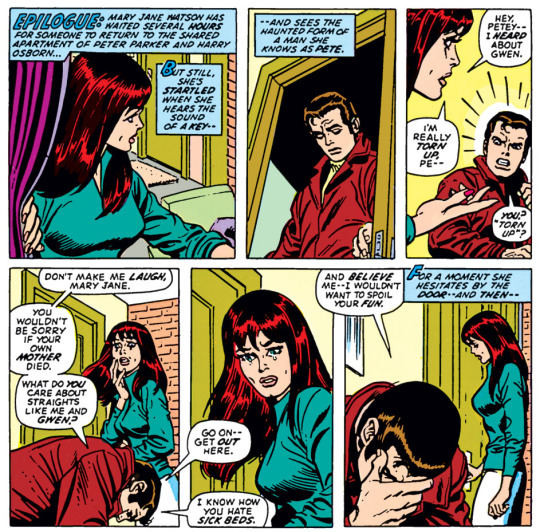
I’ve noted before that Peter has a tendency to lash out verbally towards the people in his life when he’s in the depths of grief, and he can be very good at hurting people, like here when he accuses Mary Jane of not caring that Gwen’s dead and telling her to get out.

And she doesn’t. If I had to pick a scene that I think is the most pivotal turning point in any Marvel comics relationship, it would be this one.
Peter and Mary Jane have a more complicated build up to their romance than Peter and Gwen did. Unlike Gwen, who was very much a heart on her sleeve girl, Mary Jane has secrets of her own, something Peter doesn’t really seem to realize when they do launch into a romance of their own, and when Mr. Marriage pops the question to her the first time Mary Jane ends up turning him down.
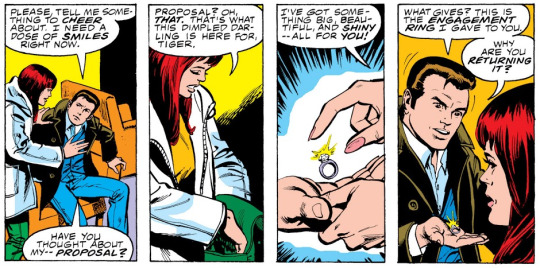
(ASM #183)
Mary Jane’s commitment issues are seated deep-seated. Gwen, as far as we know, had no reason not to believe in true love. Mary Jane has many.
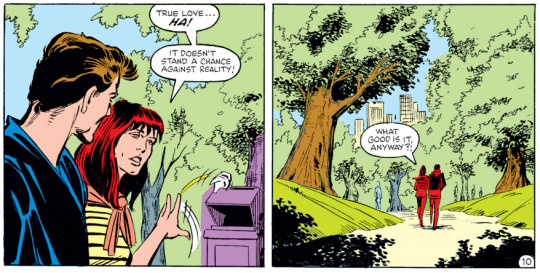
(ASM #259)
I love Amazing Spider-Man #257-259 because they totally recontextualize everything about Mary Jane and throw all her previous actions into a sharp and different new light that just makes the most perfect sense. ASM #257-259 reveals two very important things. The first is that Mary Jane knew the whole time, since before Peter ever laid eyes on her, that he was Spider-Man, and that she’s been walking around the whole time carrying this secret.

(Spider-Man: Parallel Lives)
The second is that, with Mary Jane having told Peter she knows his biggest secret, she makes it an even trade and tells him her own, letting him know the details of her childhood that shaped her into the person she is. It’s really worth reading for yourself if you haven’t already and in my opinion it’s one of the best backstory reveals ever written.

(ASM #259)
Peter and Mary Jane enter into a weird stage in their relationship at this point in time. Mary Jane is, essentially, the only person Peter can confide in once he learns she’s known his secret all along. Mary Jane, on the other hand, finds the nitty-gritty details of Spider-Man’s life difficult to deal with, even as she tries to be there for Peter. One thing I see a lot in Mary Jane vs Gwen discourse is that while Mary Jane loves Spider-Man, Gwen loves Peter, which is a completely movie-based fabrication – in 616, Mary Jane frequently wishes Peter wasn’t Spider-Man and worries about him risking his life. They have a very strong emotional – and physical – connection at this point, but they’re not officially romantically together, and during this point in time Peter is still involved in a tumultuous on-and-off relationship with Felicia Hardy.
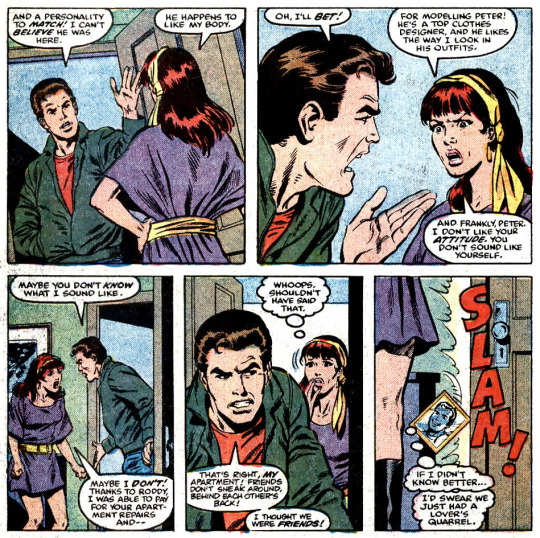
(Spectacular Spider-Man #116)
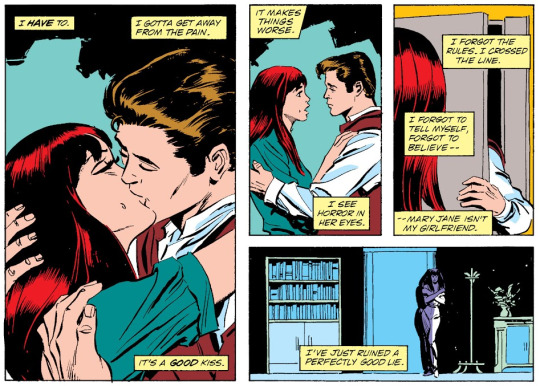
“I’ve just ruined a perfectly good lie.” (Spider-Man vs Wolverine)
They don’t officially get together again until Peter proposes marriage – again. Although Mary Jane initially turns down his offer again, she later calls him from her sister’s home in Pittsburgh asking him to come down and help her.
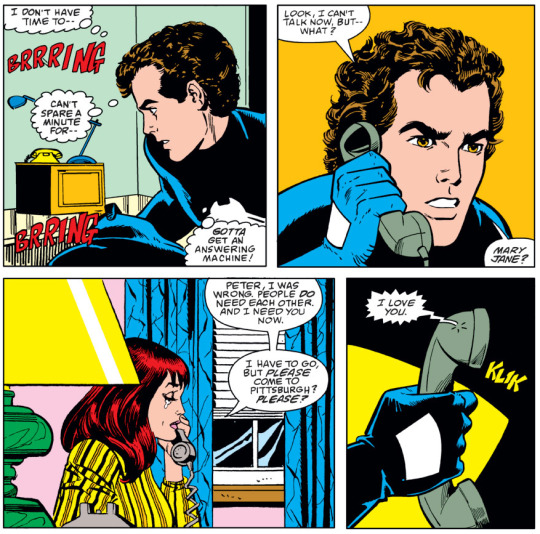
(ASM #291)
Hearing about Mary Jane’s past is one thing, but Peter’s confronted with it when he finds himself supporting Mary Jane as she tries to figure out what to do when her father’s schemes have landed her estranged sister in jail. It’s a really great lead up to the marriage: Peter has to learn to trust Mary Jane to make decisions, and Mary Jane takes the reigns when she needs to help out in a Spider-Man fight. At the end, in the airport, she agrees to marry him.

(ASM #292)
It’s not magically perfect after that – in ASM Annual #21, the wedding issue, Peter worries about Mary Jane’s more lavish lifestyle and how she’ll handle his more staid one in addition to his fears over what his enemies could do to his new wife, Mary Jane struggles with the concept of committing after so many years of running from that, and the ghost of Gwen still hangs over them both.
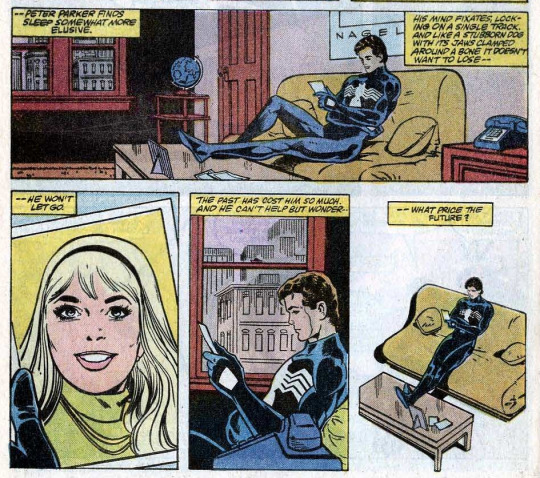
They do both end up making it down the aisle, of course, though:
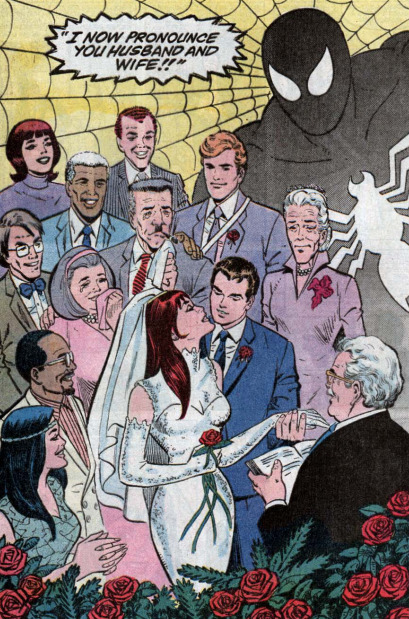
(ASM Annual #21)
One of the things I love about Peter and Mary Jane is that, while I truly do think the characters are soulmates, they’re not perfect – they have relationship problems as big as Mary Jane worrying Peter’s identity as Spider-Man will get him killed or about what effects his irradiated blood might have on any children she might have, to as small as Peter having a crisis over Mary Jane paying his bills for him:

(Web of Spider-Man #37)
And of course Peter and Mary Jane have a much more complicated and complex relationship than Peter and Gwen did, but that’s because Peter and Mary Jane had hundreds of issues over which it develops and deepens, even after their marriage, whereas Gwen Stacy wasn’t even in 100 issues after her first appearance before she died. So I think Peter and Gwen have much more of an instantaneous love connection, which is aided by Gwen’s own emotional openness, whereas Peter and MJ are more of a slow burn, with a lot of stops and starts along the way that end up being the foundation for a very strong love.
#peter parker#mary jane watson#gwen stacy#marvel comics#*replies#long post/#traincat talks comics#petermj#petergwen#this ended up just being gwen and mj because if i tackled everyone it'd be sooooo long
137 notes
·
View notes
Photo


When they said that the event calendar for the release dates of House of X and Powers of X would feature major events that recontextualize and change how you think about the entire event, they weren’t lying. If anything, based on House of X #2, it was an understatement. As much as the first issues of both series have already changed the landscape of Marvel’s merry mutants, changing the characters, and changing the rules, House of X #2 makes you wonder about everything that you’ve seen previously.
This issue also sets in stone that House of X and Powers of X are inseparable. You need to read both, not one or the other, in order to get the full story. They play off of one another more like one continuous narrative, with notes flitting back and forth between the two books, than two discrete stories. The differences are really just a matter of perspective and scope. One book looks at the story from one particular angle, and the other zooms out, looking at a different composite. The way the two play off one another, even this early into the event, is very impressive.
Jonathan Hickman and his collaborators already set a new standard with the first issues of HoX and PoX, House of X #2 takes it a step further and fundamentally changes the rules of the Marvel Universe even. It takes an already existing high water mark and raises it further.
Pepe Larraz and Marte Gracia continue to be a shining light in this story, especially when it comes to permutations. And this issue may well have one of the most pored over and inspected infographics yet.
It is truly astonishing what Hickman, Larraz, Gracia, Cowles, and Muller are doing here.
There will be spoilers below this image. If you do not want to be spoiled on House of X #2, do not read further.
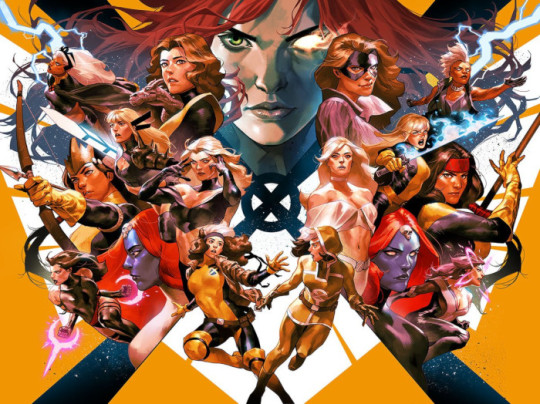
SPOILER WARNING: Below I’ll be discussing the events, themes, and possibility of what’s going on in House of X #2 and beyond. There are HEAVY SPOILERS beyond this point. If you haven’t read the issue yet and don’t want to be spoiled, please stop reading now. You’ve been warned.
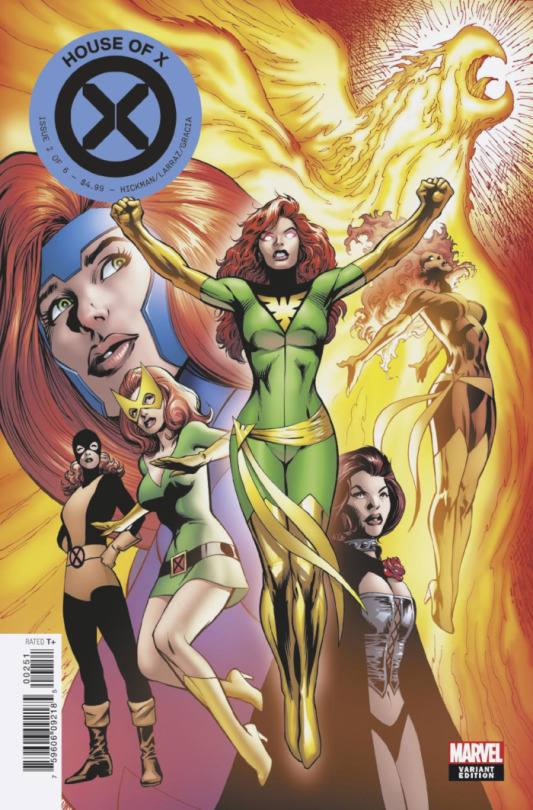
PREAMBLE | First Impressions
All I can really say is holy crap. I’ve been highly impressed so far with what House of X and Powers of X have been doing so far, but this one blows all expectations out of the water.
House of X #2 is a truly incredible story that completely reinvents the character of Moira MacTaggert, retcons decades of X-Men continuity in the process, but does so in a way that opens up endless possibilities, new stories, and more, rather than being any kind of forced insert. It’s brilliant. And it makes you wonder about all of the X-Men stories in the past, especially reading interactions with Destiny and Magneto in new contexts, and those that we’re currently reading.
Basically, Moira’s a mutant with the power of reincarnation. She keeps coming back and attempting new solutions and experiments to solve the human-mutant problem like a mutant take on Gabriel Bá and Fábio Moon’s Daytripper.
It also makes a lot of the speculation that many of us, myself included, about what’s going on in the first couple issues possibly entirely wrong. Because it changes the rules. I love it. It’s amazing and ballsy for a series as potentially dissected and analysed as this to just outright break the standard framework entirely.
Also, in regards to Pepe Larraz’s art this issue, it shifts depending on the life that’s being discussed. While Moira and the people around her are mostly the same, the panels shift and take on different shapes and angles per period. It’s a very nice and easy way to show visually that we’re seeing a different life being lived with minimal confusion or reliance on the text.
Marte Gracia continues to deliver exquisite colour art. Like Larraz’s layouts, the colours shift and change, in some ways subtle, in other ways explosively, across the different lives. It’s also impressive whenever a colourist can make an apocalyptic landscape feel dark without it looking like mud.
And Clayton Cowles and Tom Muller remain the cherries on top with letters and design respectively.
ONE | Time After Time
Throwing that spanner in the works of every theory, assumption, and possibility of the first two issues is Moira’s reincarnation abilities. It is a huge retcon that makes you question everything.

It starts out unassumingly enough with an ordinary life, lived to an ordinary span. in an ordinary way. Life One is an interesting way to lead us into this radical change to Moira’s character because it’s ordinary. It’s brilliant to present such a huge shock to the system through such a simple, unexpected life story.
And it spirals out from there as we’re taken back to Moira’s discussion with Charles in Powers of X #1, given more details and explanations of here different lives. From simple destruction chance of Life Two being cut horrifically short to the far flung length of joining with Apocalypse in Life Nine. Some lives an elements are familiar, others radically different from what we know, each apparently giving Moira a different piece of the puzzle in order to figure out the solution to the extreme division between humans and mutants.
I find it somewhat funny, given the text piece in Powers of X that sending mutants into space isn’t one of the primary proposed ideas through any of these lives, but maybe that’s something we’ll see when and if she finally gets things right.
I also find it interesting that one of the lives that gets the most attention is when she picks man over mutant in Life Three. It’s one of the ones that goes horrifically wrong as she decides that mutants are a disease needed to be stamped out, coming up with a cure to eradicate them. It establishes Destiny as an arbiter of justice to temper if Moira decides a similarly destructive path.

The various differently lives briefly shown throughout the story are also fascinating. They beg to be expanded upon through a series of specials and mini-series mining the different possibilities of these alternate existences. They feel rich and well-realized with interesting events informing on Moira’s decisions through her lifespans.
Although they can be left as throwaway ideas within the larger framework of the House of X/Powers of X event, there’s fertile ground here to expand upon in time. Moira VII Assassin could be an interesting, dark, and cynical thriller, especially as compromises to morals and ethics become hollow as the machines manifest anyway. A new Age of Apocalypse in Life Nine practically screams to be explored. It’s fascinating how all of these lives combine, recombine, and mix different common elements and themes across X-Men history and spin out something new.
It also makes you wonder about those time periods in Powers of X #1. We think that X0 through X3 are the same timeline. This issue opens up the possibility that that may not be the case. The futures might be from one of Moira’s previous lives. We don’t know yet what exactly we’re seeing and that uncertainty adds a fair amount of excitement to see what’s coming next.

What we’re seeing in House of X and Powers of X could be Life Eleven, since there are already some radical departures in how Krakoa seems to work, and all of the people who are now alive that were dead. I’ve gone through thoughts as to how it could be messing with time, but Moira’s reincarnations seems to eliminate that theory entirely. It’s also easy in story terms since it would essentially give a blank slate to establish the rules of this new reality, but I think that’s too simple.
I think, however, that we’re currently witnessing Life Ten. For one, we’re referring to Moira often in these series as Moira X, which would seem to infer more that this is her tenth life, rather than necessarily X as in Xavier or X-Men or even as a placeholder X for her multiple possible surnames (Kinross, Cowan, MacTaggert, Xavier). It also potentially rewrites the meaning of the title Powers of X as being more personal, not just referring to the time periods, but these being the “Powers of [Moira] Ten”. It takes all of the huge, reality and time-spanning ideas and humanizes it, making it a personal tale of one woman’s struggles.
I think Life Eleven is triggered at the end of House of X/Powers of X and is the seed for the “Dawn of X” titles spinning out of this story.
TWO | Entanglements
The wider implications of Moira’s powers are felt in how long you’ve been reading X-Men comics and whether or not you want to do a deep dive into the past. It could be fun, it could be maddening, and ultimately the story in House of X and Powers of X doesn’t necessitate it. You can read this still without having ever read a single X-Men comic and enjoy it.
But over-complicating things is a pastime of longtime X-Men readers. These books were written for a long period of time by Chris Claremont, after all.

One of the major things that this shows in various permutations throughout the story is redefining Moira as one of the primary movers throughout history. She serves now as a catalyst for events and direct causes for divergence points creating alternate timelines. In some ways subtle, in others profound.
I’ve stated and speculated previously that Xavier seems different through the first issues of both series, in terms of the X1 Xavier potentially exhibiting telekinetic powers he never had and his kind of creepy character affectations (that could have been continuing on with X’s behaviour from Astonishing X-Men) and the seeming oddity of not knowing who Moira was in X0, which I thought could have been put down to time travel shenanigans, but that seems moot with House of X #2. It’s probably just a new reality that we’re dealing with.
It raises questions as to whether or not Xavier is really a puppet master as previously believed, or just another cog in the Moira Machine, figuring out that possibly the only way to answer the Man-Mutant conundrum is to get Xavier, Magneto, and Apocalypse (and possibly the machines) all working together.
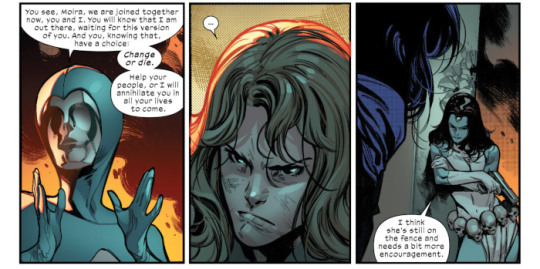
And then there’s Moira’s run during the ‘80s. The Muir Island X-Men. Magneto’s rehabilitation. Working with the New Mutants. Aiding Xavier throughout. It takes on an entirely different element knowing that she was knowledgeable of various events beforehand. It takes working with Freedom Force in an entirely different light. There’s undoubtedly a lot you could dive deeper into in order to figure out how things stack up in this new light.
THREE | Number Six
Curiously missing from the infographic giving Moira’s timeline is Life Six. There’s a gap between Life Five and Life Seven that remains unaccounted for. Nor does it come up when she’s talking to Charles Xavier explaining to him who he is.

For a story that is built on detail and complexity, the omission has to have a reason. And because it’s missing, we can potentially get endless speculation as to why it’s missing.
Personally, I think it could be because it’s actually the baseline Marvel Universe that we knew. Life Ten would appear to be that, being consistent with what we know, but there’s doubt. We’ve been told through Moira’s conversation with Destiny that she has a limited amount of reincarnations, ten, with possibly an eleventh if she got things right.
Or I could be completely wrong and it’s something else entirely.
CONCLUSION | I’ve Got a Lovely Bunch of Coconuts
It’s taken me a while to put fingers to keyboard on this one for a number of reasons, one of the primary ones being that this story just left me gobsmacked. It presents so many different possibilities and reinterpretations that you’ve practically got to tear up the script as to what you thought was going on. It makes you question whether or not anything at all that you’ve read before is in a particular frame or even relevant to a particular frame.
It’s incredible.
Hickman, Larraz, Gracia, Cowles, and Muller have managed to take an already impressive new approach to the X-Men and elevated it further beyond imagining. It’s very exciting. House of X #2 represents an even greater sea change than we were led to believe.

d. emerson eddy is fairly certain he doesn’t reincarnate into the same life if you kill him, so please don’t try.
9 notes
·
View notes
Text
SPOILERS for Spider-Man PS4
Can we talk about how the end of this game, how ironic it is, how meta it is and how it just might be signifying we’re moving into a new era for Spider-Man?!!!!!!!!!!!!!!!!!!!!!!!!!!!!!!!!!!!!!!
Okay so at the end of the game Aunt May is rapidly dying due to a plague unleashed by Doc Ock, a villain Peter had a direct yet inadvertent hand in creating. Peter beats Doc Ock and gets the single sample of the cure for the plague.
Problem is that with there being just one sample of the cure he has to choose between giving it to Aunt May or handing it over so that more cures can be developed which will take more time than May herself has.
Or in other words Peter has to make a decision between:
a) Aunt May living and thus not having to live with the pain of losing her or the crushing guilt of his hand in that, but at the expense of other people and the greater good
b) Aunt May dying, living with the pain of losing her and the crushing guilt from his hand in that, but he’d have avoided other people suffering and served the greater good.
Does ANY of that maybe sound familiar to anyone?

Guess what?
Peter is sorely tempted and ALMOST gives May the serum. But then in a gut wrenching moment decides otherwise.
So Spider-Man in this game morally and thematically did the OPPOSITE of what he did in One More Day.
Now I know what you’re going to say. That it’s not the same. Nobody’s lives were on the line in OMD except for Aunt May’s and in saving her Peter wasn’t sacrificing anything beyond his personal happiness. He was just choosing to not have his wife anymore and he might even have maybe gotten her back later perhaps?
Nope.
In One More Day Mephisto explains two critically important details.
In making this deal Peter AND Mary Jane’s souls will be in a state of eternal torment. And
Making this deal screws over God
We have to consider this from an in-universe point of view.
In the world Peter inhabits he is fully aware there is an afterlife and even if he wasn’t he and Mary Jane believe in it anyway. He is also fully aware God exists, he met him shortly before OMD as did his friends and allies the Fantastic Four. He is also talking to effectively the Devil which in and of itself confirms the existence of God and btw he’s also met Thor and Ghost Rider.
Which means Peter might not have been sacrificing anyone’s lives, but he is aware that in the world he inhabits he is aware that death is not truly the end of someone’s existence and that there is a higher power of Good and Evil in play here.
And he is choosing to very directly fuck over that higher Good, help the higher objective Evil and put an innocent person, Mary Jane, through a state of suffering. What else do you think ‘torment’ means? It means suffering and this isn’t even a temporary state of suffering like the sick citizens of the PS4 game. They might slowly and painfully die but they will find peace afterwards. In OMD Peter was agreeing to allow Mary Jane to suffer for the rest of her natural life (so at least 50 years if you say she was like 30 and would live until at least 80 years old) and then continue to suffer for literally all of time thereafter.
It might only be one person specifically and directly suffering but if you are going to help someone who’s goal is to maximize suffering across the entire universe and fuck over the counterbalance of Good across the universe you are in effect helping multiple people suffer. Which isn’t even getting into you are causing suffering to the very person you are saving because they’d obviously not want you do do that.
Which is another point in favour of the PS4 game. Before OMD May made it clear she’d at peace with dying and first and foremost wants Peter to be happy and Peter just ignored this due to how HE personally felt. In the PS4 game a noticeably younger and less (you’d think) worldly wise Peter gets a less clear and explicit message from May on her deathbed which amounts to the same thing.
And he chooses differently.
In fact not only does he choose differently but in a 3 month time skip after May’s death it’s clear he’s still sad about it but is getting on with life, he hasn’t been broken in two by the experience. This was partially the ‘moral’ justification for Peter’s decision in OMD.
If May died the guilt would destroy him. Which is saying to the readers ‘Hey do you WANT Spider-Man to be destroyed!’ and/or ‘If Spider-Man is emotionally devastated then he can’t be Spider-Man anymore so more people will get hurt because he wasn’t there!’
And yet in this game a younger Peter, who has had LESS time to deal with Uncle Ben’s death and needs to make a decision regarding the life of a very clearly YOUNGER Aunt May who in fact hasn’t lived a fully long and happy life (Comic book Aunt May had maybe 5 years left in her, PS4 Aunt May had at least 20). And he chooses the harder but mature and morally right one even at great personal cost. Whereas in OMD his decision was easy, immature, immoral and selfish but also at great personal cost.
Then you’ve got the role of MJ in all this. Whilst not involved in his decision in the video game the game ends with Peter and MJ in love and rekindling their relationship, possibly even moving in together.
If the latter is more than a possibility this is important because part of OMD was recontextualizing Peter and MJ’s marriage as (allegedly) fundamentally the same except they were just living together not married. More importantly OMD existed specifically to end their relationship.
If you go by the living together = marriage, then in the game idea then Peter and MJ possibly living together and getting back together in the aftermath of Peter making the opposite choice he did in OMD is a further deconstruction and condemnation of that story.
Honestly it still would be if they aren’t going to be living together.
And all this is highly ironic for two big reasons.
Two of the people involved in the story of this game were Dan Slott and Christos Gage. The latter has written terrible anti PeterxMJ stories (such as Superior Spider-Man #31) and the former has done that too but also publicly defended OMD. Both in terms of it being more creatively enriching and in terms of it being in character and morally justified for Spider-Man.
The game over all is chiefly based upon stories from Brand New Day and Dan Slott’s run all of which directly followed, were facilitated by and attempted to creatively justify One More Day.
The fact that this ending occurred in the game just might be significant in terms of Marvel’s attitude towards the Peter and MJ relationship and their marriage over all.
After all as big as video games were in 2007 (when OMD was published) they are even bigger now, receiving promotional campaigns and fan hype not dissimilar to films or TV shows.
Not only has there already been merchandise produced based upon the game (such as a prequel novel) but Marvel Unlimited, Marvel’s personal online service to read their comic book library, even promoted the game when it was released by providing a reading list of relevant Spider-Man comic books. Although you could equally argue they were capitalizing upon the game and using it to promote their own comics and service.
This equally applies to the fact that the version of Spider-Man from the PS4 game (as of this writing) has and will be featured in comic books published by Marvel and in particular will be a notable player in a Spider-Man crossover event, Spider-Geddon.
So the story directions in this game are not necessarily confined to the game or their specific version of Spider-Man alone. It is one of the most visible versions of Spider-Man and one the general public have and will be interacting with a lot. Arguably even moreso than the MCU film version since in the game audience members literally can be Spider-Man as opposed to just watching him.
All of which means that those story directions could very well be representative of the direction Marvel over all wishes to take Spider-Man in and the message about who and what makes Spider-Man who he is. In this case hypothetically this could be a sign that Marvel as a company might be reorientating to be more accepting of Mary Jane as a character, of her and Peter relationship, of their marriage and maybe just maybe inclined towards restoring it by undoing OMD.
If nothing else this game’s ending, how it frames the Peter/MJ relationship and how it clearly undermines OMD will help to incline the public and therefore Marvel towards that.
#Spider-Man#mjwatsonedit#Mary Jane Watson#Mary Jane Watson Parker#mj watson#aunt may#may parker#One More Day#Spider-Man ps4#spider-man playstation#insomniac games#Insomniac Spider-Man
119 notes
·
View notes
Text
Deathstork the Hunted #0
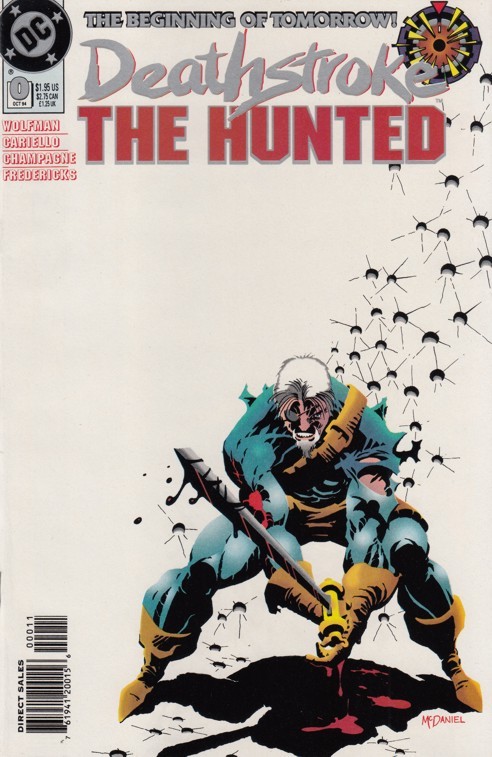
For a comic book that I'm fairly certain will chug mild to average amounts of donkey semen, this cover is pretty cool. Except for Deathstork's elf shoes.
Holy fucking fuck balls with spicy fuck sauce. I know in my Team Titans Annual #2 commentary I mentioned how much DC and Marvel wanted to be Image around this time but I sincerely forgot just how much. I think I can rest my case with this advert for a new Doctor Fate comic book.
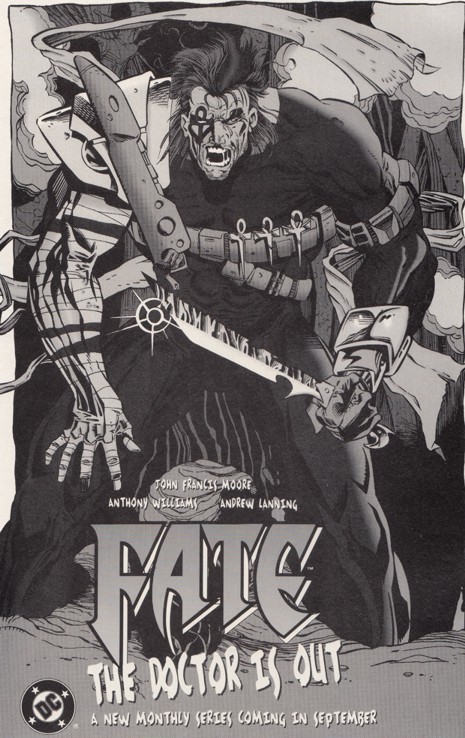
"This is what our audience wants, boys! I guess we have to give it to them!" To be fair, I actually love this cover and I really want to fucking read this comic book now.
The cover of Team Titans was proof of my argument much in the same way that the low-level Chernobyl radiation detectors were proof that there'd been a radiation leak. This is like finally getting their hands on something that could measure extreme levels of radiation and everybody suddenly shitting themselves. I could make the argument that this is just DC still trying to capture that whole X-Factor X-men hype and McFarlane's Spider-man days. But that's all really just the precursor to Image. For whatever reason, these guys made art that made fangenders ruin the couch they were sitting on. Not that I ever ruined a couch I was sitting on over their art. But I know a few jerks who definitely did! Anyway, that Marvel stuff was just the prologue or the opening chapters of Image. And DC definitely would dip their toes in this fucked up poison art well many, many times before the industry nearly collapsed under the weight of all the extra stress lines drawn all over every character's face. And also maybe the pouches and the bullets. Oh, and maybe the variant and foil covers. Currently, Checkmate and other government agencies are hunting Deathstork because he did the worst thing in all of history. I don't know what that thing is yet but I'm sure there'll be a flashback. Remember, Zero Hour was all about touching up everybody's origin stories and slightly recontextualizing the current story arcs. Maybe some changed dramatically but since I certainly didn't read many of them and I've done no research, how am I supposed to speak with authority and also know I'm speaking the truth?! Let me just state facts in a way that sounds like I know what I'm talking about so I don't have to do any real work and not be embarrassed by constantly being called out by Actually Nerds. Before Deathstork dies (or kills everybody chasing him, more probably), he remembers what happened to him three weeks ago. He was visiting the Hmong whorehouse in New York (where Rose and a bunch of other children were being raised) to find out what happened to one of them that was seriously injured. She told a story about tying up a senator and then making him wait while she sat in the bathroom. While waiting, some guy in an omega outfit broke in and shot him dead. She jumped out a window, landed on her face, and blacked out.
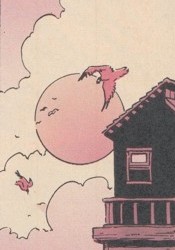
Ahem. She landed on her face, artist!
The prostitute must have noticed the assassin was a big dumbfuck because how could he not know a prostitute was in the house? The senator was tied up and the assassin made a crack about the senator's wife knowledge of this event before killing the senator. Anyway, Deathstork will probably be framed for this. And maybe the murder of a few other senators because why would it be such a big deal if he killed just one?! It turns out the senator gets replaced by a double who has access to Clinton. His plan to blow himself up while jogging with Clinton is foiled by Deathstork when Deathstork shoots him from a helicopter. Afterward, the government thinks Deathstork was out to kill Clinton as well so now he's Deathstork the Hunted. The whole thing was some plot by some guy from Zandia named Crimelord. I think Zandia is where Brother Blood is from. It's sort of like Qurac. It's just a place where DC can house all of their terrorists so nobody gets upset when they use the wrong race of people as terrorists. It just makes comic books easier! Although it really seems more like a dog whistle of sorts. "We all know that every person living in specific countries are total terrorists! That's why people buy into places like Qurac and Zandia and Latveria. Wink, wink!" Which is kind of a weird way to go about things when, in comic books, you could easily just have a super villain be from any country without automatically being a representative example of the people from that country. It's not like everybody blames every American for The Joker! Or do they? Oh man, what an international public relations nightmare that guy's been! No wonder people in Europe can't stand Americans! Fucking Joker! Deathstork the Hunted #0 Rating: C. So that's the big Zero Hour twist on Deathstork! He's now the most wanted man in America where before he was just the greatest assassin in America but also kind of a good guy so people like Batman and Superman mostly just shrugged their shoulders and let him be. Although once every few years, they have to battle him, just to show that they're keeping an eye on him so he doesn't get too out of control. Although isn't Batman at least partly responsible for every one of Slade's murders simply because Batman never tries too hard to bring him in?
0 notes
Video
youtube
Welcome to the official launch of Homestuck, Explained-- a fan project aimed at making a deep reading of Homestuck accessible to a casual audience.
In this first episode we establish a new, more accurate description of the comic that should help new readers better understand what to expect from it, and old readers better understand what it’s doing.
Specifically, Homestuck is an illustrated, animated, occasionally interactive play centered around a creation myth. And to explain exactly what that entails, we illuminate Homestuck’s influences from both Shakespearian theatre and the religious texts like the Bible.
Special thanks to @hexmeridian , without whom this episode would not have happened. He helped me a ton with research and sources and I can’t thank him enough, especially since he is a rad friend :D
His writing can be found at Not Your Mama's Gamer, and it owns: http://www.nymgamer.com/?author=28
Check out more details on this project--and how you can participate-- here!
The link above includes the overviews and details for the long term scope of this project, but the basic premise is this:
Donating one dollar or more on Patreon will give you access to a private discord server for patrons and enthusiasts of this project, and a vote on what order I do these videos in. You’ll also get a voice in shaping how these videos get made through the conversations about Homestuck we can all have there.
Higher amounts of donations include bonus rewards, including the ability to invite friends who can’t afford patron themselves to the project.
The idea here is to create a new kind of Homestuck community: A friendly, moderated community that includes people passionate about or interested in Homestuck and discussing it in artistic, critical terms. I want this place to be a sort of “Big Tent” for critical discussion about Homestuck, where new ideas about Homestuck can be born and old ideas traditionally sectioned off in fandom subcultures can find new audiences. All told, I hope this will lead to a more vibrant, inquisitive, excited fandom--both in the discord server itself, and in the rest of the fandom as more and more people get exposed to this content and benefit from people continuing the conversations we start on public platforms like Tumblr, Twitter and Youtube. Especially with Hiveswap coming in, there’s gonna be plenty of thinking and recontextualizing of Homestuck to do, and I’d argue there already is! I’m hoping you guys will find it exciting to join me on that journey.
You can follow along with us on other social media: Twitter: https://twitter.com/RoseOfNobility Facebook: https://www.facebook.com/HomestuckExplained/?ref=aymt_homepage_panel
Edit Note: Tumblr cut off part of this post initially, so if you reblogged it earlier and see this, please do me a solid and re-reblog if it’s not too much trouble! Thanks!
314 notes
·
View notes
Text
Journal Entries/3 Project Ideas
Research Journals
1). https://www.artic.edu/artworks/180585/untitled-march-5th-2
“Untitled (March 5th) #2” by Felix Gonzalez-Torres, 1991
This piece is made of two light bulbs hung on and plugged into a wall by two tangled extension cords. Once the bulbs are plugged into the wall they are to stay on until they go out one after another. Once they are both out it’s up to whoever’s displaying it when to change them and start the process over.
This piece was made by a gay man near the end of the HIV/AIDS epidemic in the us. The two bulbs are meant to represent lovers entangled in each other’s lives until one life inevitably ends. The remaining lover (bulb) has to then sit alone until it goes out and joins its partner. The time it takes for each bulb to go out varies a little each time and mirrors the variability of human life and love.
2). https://www.brooklynmuseum.org/opencollection/objects/169803
“Napoleon Leading the Army over the Alps” by Kehinde Wiley, 2005
This painting references Jaques-Louis David’s “Napoleon Crossing the Alps” but subverts the viewer’s expectations by placing a black man in contemporary clothing in Napoleon’s place. This serves as a way to reclaim ‘western’ history by showing that black people have always been there alongside white people. The fact that viewers may find a black man in a european-style painting so jarring also serves to comment on the way black people have been treated throughout western history and recontextualizes black and european history. Finally the contemporary clothing juxtaposed with the historical setting serves as a way to both empower contemporary black viewers (by representing them in a historically important position) and invite the contemporary audience to reconsider their conceptions of european history.
3). https://hirshhorn.si.edu/exhibitions/mark-bradford-picketts-charge/
“Pickett’s Charge” by Mark Bradford, 2020
This is an installation of 8 collages (around 400 feet in total length) made of colored paper, string, and reproductions of images from the original Pickett’s Charge in 1863. Bradford tears, scrapes, and builds up his materials to create new textures and invites viewers to reconsider their conceptions of the civil war. Braford also juxtaposes contemporary materials with images of Pickett’s Charge to invoke the idea of new perspectives on historical events.
4) https://www.brooklynmuseum.org/opencollection/objects/5170
“Sweet Smell of Sage Enters the Room” by Ida Applebroog, 1979
(CW: domestic abuse)
This is a series of six nearly identical prints arranged in series, like a comic strip. Each print features the same image of a couple through a window with the curtains opened. Through the window the viewer can see a man forcing a woman (presumably his intimate partner) to the ground while raising his hand to strike her. The fourth print contains a panel that reads “the sweet smell of sage enters the room.” Because this piece is arranged like a comic strip it can be assumed that each print represents a different point in time and therefore depicts the monotony, terror, and inevitability of persistent domestic abuse. The window implies that the viewer is seeing something private, and the comic form allows for quick consumption of a longer narrative which causes the viewer to question their role in it as a spectator.
5). https://www.icaboston.org/art/mickalene-thomas/monet%E2%80%99s-salon
“Monet’s Salon” by Mickalene Thomas, 2012
This painting/collage depicts a fractured interior space containing a white lounge chair, ornate rugs, a widow to outside foliage, a potted plant, and paintings on a wall. This space is evocative of nineteenth century salons but fragmented and made of contemporary materials. It, like Wiley’s and Bradford’s pieces, juxtaposes historical imagery with modern materials and the fragmented nature of the piece serves to recontextualize this history. The reference to Monet in the title is meant to allude to Impressionism specifically and references impressionist salons, but the fact that this piece was made by a black woman in a contemporary setting with contemporary materials gets the viewers to question their relationship with and the history of the Impressionist movement.
Three Ideas:
1). My first idea was to carve an image into a 3.75”x5” block (probably a small portrait of my grandpa, since he often used similar tools in his own art) and make one print with it every day. I would turn this into a collage after I have enough. This stifles the flow of normal block printing (in which I would print multiple copies one time and be done) and forces me to slow down. I would have to set and clean up after making one print, which I have to keep and use regardless of how it turns out. This would be incredibly frustrating but I think the differences in each print would provide a little insight into my process and mental state each day. For example a print being insufficiently inked could mean I was in a hurry or frustrated with the whole process. Maybe I have extra colored inks to use, or other materials to print on. Overall I think the difference in each print could show my changing approach to printing the same image everyday, whether they get better or sloppier.
2). My second idea is to take around 10-20 portrait photos (of a roommate probably) in rapid succession (in the span of about a second) to capture many frames of a subtle movement. I would then draw as many of these as possible in charcoal on 11”x14” sheets of vellum. Each drawing would have varying levels of detail so as to avoid monotony. Once each drawing was done I would overlay each one over the last offsetting them by about a half an inch so that you can see each drawing. This would create an effect of movement not only by showing the different frames of movement over one another, but also by physically moving each frame. My hope with this idea is to show how much can happen in a short amount of time.
3). My final idea is to print a bunch of politically charged zines (probably around 50), make little adhesive sleeves to put five or so in, add invitations to take one, and leave them in around Ypsi (in a couple places with heavy foot traffic). I would visit my sleeves fairly regularly (it’s a long walk from my house) to document how they’re doing. I’d replace any zines that had been taken and replace the sleeves if they’d been torn down. My goal is to see how many people would genuinely take/read the zines, how often my vandalism would get torn down, and how the changing seasons affects both. I’d honestly try to keep this going for as long as possible (even after the end of this class) unless something went horribly awry.
0 notes